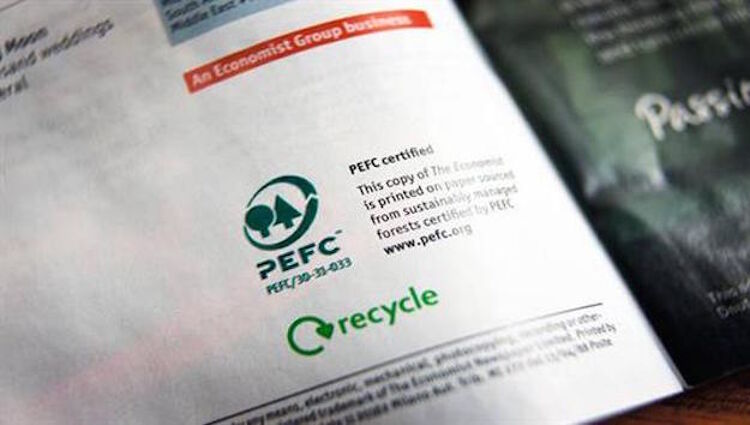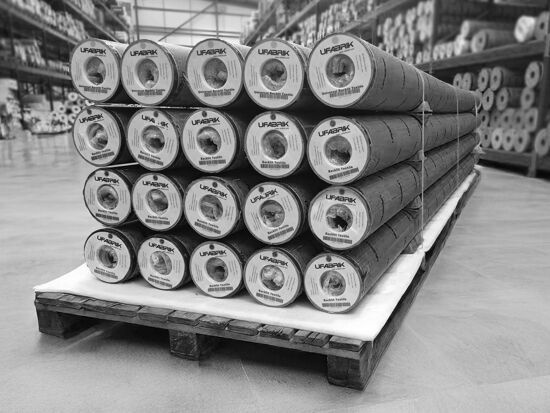New standard supporting the environmental impact of print

Laurel Brunner considers the implications in making an environmental impact declaration for print and calls for a new standard that measures the materials used in all aspects of the printing process.
How do you make an environmental impact declaration for print? And why would you want to? These are questions most printers would prefer not to answer, but the second question is easier than the first: customers.
Over the last few years big brands have become increasingly environmentally aware. This occasionally is because the top brass believe that it's in the interests of the business to do so.
Take Unilever as an example. CEO Paul Polman has committed Unilever to substantial growth achieved in the context of an overall environmental footprint reduction. And he has set up the Unilever Sustainable Living Plan to improve the company's social impact, but Unilever is an exception. Mostly big corporations have become socially aware because their shareholders and customers expect them to be.
As these voices get louder, Unilever and its ilk will want to know more about the environmental impact of print. They will want to see data supporting environmental declarations and expect the products and services they buy to be environmentally accountable.
Fortunately there are plenty of ecolabelling options, such as the Blue Angel or the Nordic Swan companies. There are also ISO standards such as ISO 14001 (Environmental management systems) and ISO 16759 (Calculating the carbon footprint of print).
What's missing is a standard that measures the materials used in all aspects of the printing process, so that labellers can reference accurate data in their environmental label compliance assessments.
Currently this is not possible. We have no standardised means of collecting the data relating to substrates, inks, press chemicals, blankets or printing plates, and so on. Accurate ecolabels need tools that nail down the chemicals and materials used in print production, so that it can be communicated to the whole supply chain.
This is not an unambitious task, but work is already underway. The goal of all parts in the series is the same. The ISO 22067 series is intended to help make comparisons of different print production models.
This is possible because the series will provide a means for quantifying and then evaluating the specific environmental aspects and impacts of a print production model. It will make it easier to decide which print method to use, based on data related to all materials used in the process.
ISO 22067 deals only with the production aspect of a print media product, not its entire life cycle so it's a complement to ISO ecolabelling standards. Work on this series of documents is underway, for specific categories of print, starting with packaging.
Source: This article was produced by the Verdigris project, an industry initiative intended to raise awareness of print’s positive environmental impact. This commentary helps printing companies keep up to date with environmental standards, and how environmentally friendly business management can help improve their bottom lines. Verdigris is supported by the following companies: Agfa Graphics, Spindrift.click, EFI, FESPA, HP, Kodak, Kornit Digital, Ricoh, Splash PR, Unity Publishing and Xeikon.
Topics
Interested in joining our community?
Enquire today about joining your local FESPA Association or FESPA Direct
Recent news

Why more print service providers are turning to consignment stock management
Robin East, Group Chief Commercial Officer at UFABRIK discusses how consignment stock management is gaining popularity in the print industry, offering improved cash flow and operational efficiency. It ensures on-site stock availability, enhancing customer service and reducing delivery times. This approach also promotes sustainability through consolidated shipments and fosters stronger supplier-customer relationships.
.png?width=550)
Personalisation is a long-tail experience: how Variable Data Printing can drive years of engagement
Pat McGrew shares how Personalisation in print offers long-term engagement, not just one-off interactions. Using minimal data, tailored campaigns across formats like mail and signage can boost loyalty. GDPR compliance is key, requiring transparency and consent. Success stories demonstrate personalisation's power, making it a vital competitive edge.

How is AI quietly shaping the print industry
Johnny Shells, Principal Analyst at Keypoint Intelligence shares how AI is quietly transforming the print industry, enhancing efficiency and personalisation. It automates tasks like prepress checks, job scheduling, and colour management. AI also enables personalised printing, reduces waste through demand forecasting, and improves customer service with chatbots. This technology optimises workflows, not replaces human expertise.
